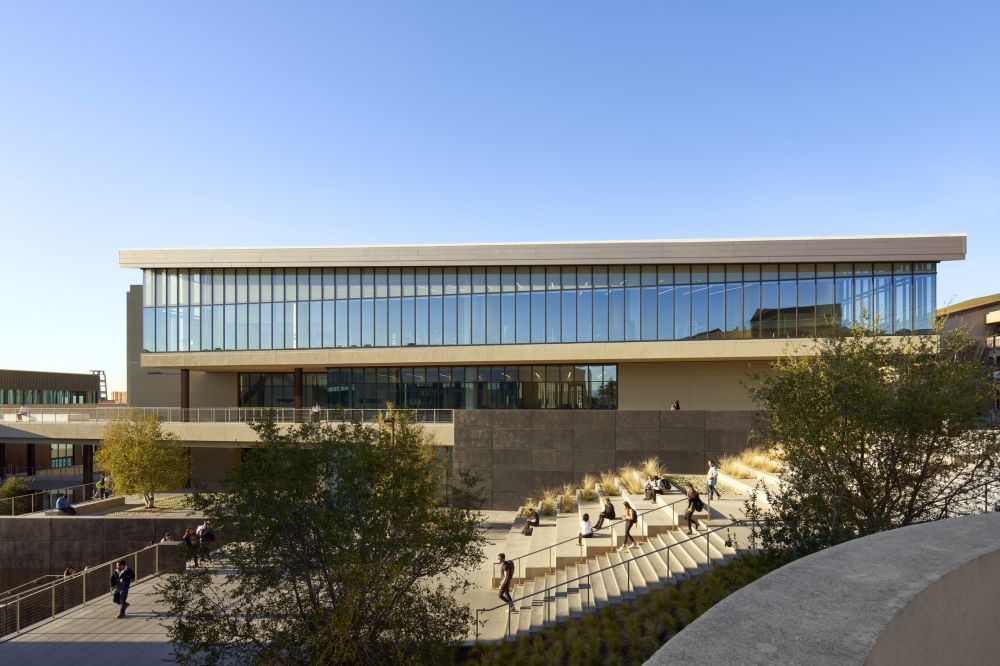Edward J. Ray Hall
Creating a net-zero, mass timber prototype for the future
- Client
- Oregon State University – Cascades
- Location
- Oregon, United States
- Size
- 50,000 square feet
- Status
- Completed
Edward J. Ray Hall provides a new learning environment for Science, Technology, Engineering, Arts and Math on the OSU-Cascades campus while creating a vibrant student hub with active interior and exterior spaces. SRG + CannonDesign designed the building to elevate the University’s identity in Bend while exemplifying its commitment to sustainability through Net Zero Energy and a structure of regionally sourced mass timber.
As the first building to engage a 46-acre reclaimed pumice mine acquired by the University for future campus expansion, Ray Hall is perched atop its steep rim with panoramic views across the future west campus and to the mountains beyond. The building and its adjacent outdoor spaces step with the topography to create a gateway and link between the existing upper campus and the future development that will occur in and around the bowl of the transformed mine.
Testimonials
A prototyping approach
The building was conceived through a prototyping process focused on defining a new type of academic environment that would support a variety of educational activities and functions, promote interdisciplinary collaboration and embody social equity and sustainability. The concept utilizes a centralized, flexible technology core paired with a modular grid to organize the multiple activity-based space typologies derived from project goals and objectives. The resultant prototype is a scalable, adaptable concept that will serve as the model for future buildings, with the ability to be tailored to each project’s unique opportunities, conditions and location.
Locally sourced renewable materials
The meaningful use of mass timber is a plain indicator of the campus’ robust commitment to sustainability, setting the bar for future sustainable design in Bend. By selecting a mass timber structural system and sourcing responsibly — with 40% deriving from restoration timber and 14% from Native-owned and managed forests — the project realized carbon savings equal to removing more than 750 cars from the road. These design practices set an important precedent for how mass timber can and should be used in academic and lab environments, both in Bend and beyond.
Commitment to sustainability
Edward J. Ray Hall’s east/west orientation and exterior design contribute to the Net Zero Energy-ready target established by the University. Primary façades feature tall windows with a filigree of vertical shading devices tuned to their solar orientation to maximize daylighting and mitigate glare and summer heat gain. A broad horizontal roof plane floating above the mass of the building form accommodates an array of photovoltaics to provide on-site renewable energy for the project.
















